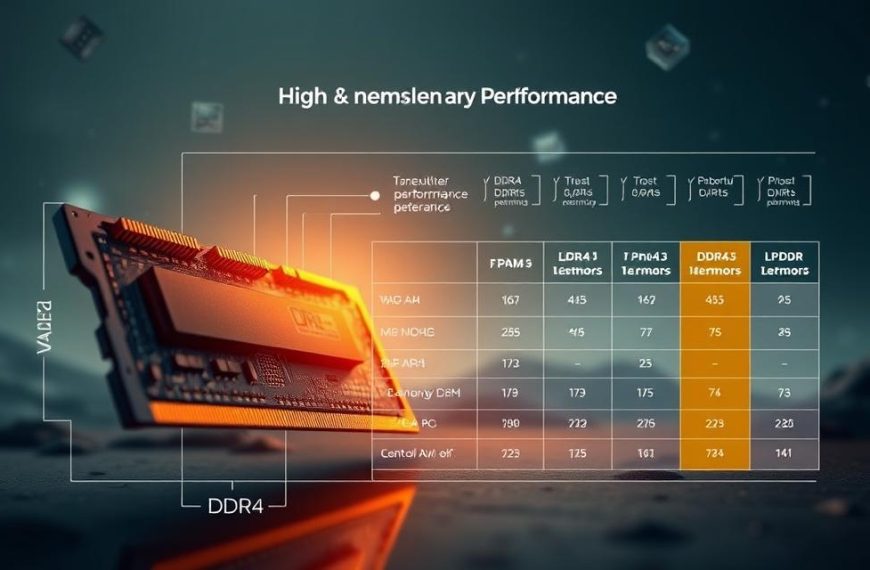In today’s world, companies use technology a lot to move forward. They need people who can link tech skills with business goals.
These leaders manage a company’s tech setup and digital plans. They make sure systems work well and meet company targets.
This job needs both tech smarts and leadership skills. They must lead teams, handle money, and keep data safe.
For those who know their tech and leadership, this career is a great chance. They need to be good at solving problems and planning ahead.
Knowing what this job is about helps us see its value. It’s a fulfilling IT management career for those who love technology.
Defining the Computer and Information Systems Manager Role
A computer and information systems manager connects technology with business goals. They manage all computing needs and make sure tech investments help the business grow.
Core Responsibilities and Duties
The IT manager duties include technical and people management. They look into new tech and keep systems running well.
Overseeing IT Infrastructure and Systems
Technology infrastructure management means keeping hardware and cloud services in top shape. Managers check system performance, plan updates, and make sure everything works together.
They also set up security measures and fix technical problems. Regular checks help find and fix security risks early.
Managing Teams and Projects
IT team leadership means guiding analysts, developers, and support staff. Managers give out tasks, set deadlines, and check on progress.
They also train the team on new tech. Good communication helps everyone know their part in the team.
Key Objectives in Organisational Context
Computer and information systems managers work on big goals for the company. Their choices affect how efficient, secure, and big the company can be.
Aligning IT Strategy with Business Goals
Good business strategy alignment means tech helps meet company goals. Managers talk to top executives to understand what the company needs and suggest the right tech.
They plan out tech needs for the future and solve current problems. This way, systems grow with the business.
Ensuring Security and Compliance
Managers put in place strong security to protect data and systems. They keep up with laws that affect their field and make sure systems follow them.
They do security checks and train employees to avoid breaches. They also have plans ready for any security issues.
“The most effective IT managers know that tech should serve the business, not the other way around. Their value is in matching tech with business goals.”
These experts balance today’s tech needs with planning for tomorrow. Their role is key as tech becomes more important for business success.
Essential Skills for Success
To excel as a computer and information systems manager, you need both technical skills and people skills. This mix is what makes a great manager, not just a good technician.

Technical Proficiency and Knowledge
Top IT managers have a deep understanding of technology. They can make smart choices about what tech to use and how to use it.
Understanding Hardware and Software Systems
Knowing about the latest tech is key. Managers must check if systems work well together and can grow as needed.
They also need to keep up with new tech. This helps them find ways to stay ahead of the competition.
Cybersecurity and Data Management Expertise
Cybersecurity expertise is vital to keep data safe. Managers use strong security plans to protect against threats.
They also make sure data is handled correctly. This means setting rules for how data is stored and used.
Leadership and Interpersonal Abilities
Just knowing tech isn’t enough. Good managers also have people skills. These skills help them work well with others.
Team Management and Communication Skills
Communication skills for managers are essential. They help explain tech to non-tech people. This makes sure everyone is on the same page.
Good managers also help their team grow. They make sure everyone works well together and uses their strengths.
Problem-Solving and Decision-Making
Managers face many challenges. They need to think clearly and make quick, smart decisions. They use special methods to solve problems.
They also make big decisions. These decisions balance what’s possible with what’s practical for the business.
Educational and Professional Requirements
To succeed as a computer and information systems manager, you need a mix of education, certifications, and experience. This mix helps you handle complex tech and lead teams well.
Academic Qualifications and Certifications
Most jobs want candidates with a solid education background. A bachelor’s degree is the minimum, but many employers look for more for top jobs.
Relevant Degrees and Training Programmes
Studying computer science, information technology, or management information systems is key. These courses teach the basics for IT manager education. You’ll learn about:
- Network architecture and security principles
- Database management systems
- Software development methodologies
- Business administration fundamentals
Getting a master’s degree can boost your skills. Master’s in Information Systems or an MBA with tech focus offer advanced training in tech and leadership.
Certifications show you have specific skills and keep you up-to-date. Popular IT certifications include:
- CompTIA Security+ for foundational security knowledge
- PMP (Project Management Professional) for project leadership
- CISSP (Certified Information Systems Security Professional) for security management
- ITIL Foundation for service management framework
“Earning an advanced degree and developing both technical and leadership skills can significantly benefit professionals in standing out from their peers in this competitive field.”
Experience and Career Progression
Experience is key for moving up in IT management. Most managers start in technical roles and then move to leadership.
Entry-Level Roles to Management Path
The journey in career progression in IT starts with roles like:
| Entry Position | Typical Duration | Key Skills Developed |
|---|---|---|
| Systems Analyst | 2-4 years | Requirements analysis, system design |
| Network Administrator | 3-5 years | Infrastructure management, troubleshooting |
| Software Developer | 3-5 years | Programming, project collaboration |
| IT Support Specialist | 2-3 years | User support, problem resolution |
These roles give you the experience needed to understand tech challenges and team work. You’ll move up to team lead or project manager before becoming a full manager.
Continuing Professional Development
The tech world changes fast, so keeping up with education is vital. Good managers stay current by:
- Going to industry conferences
- Attending technical workshops
- Being part of professional associations
- Completing online courses
This dedication to learning helps managers lead their teams through tech changes and innovations. A strong degrees for information systems management and ongoing learning are key for a successful career.
Challenges and Opportunities in the Role
Starting as a computer and information systems manager is both challenging and exciting. It’s a role where tech meets business strategy. You need to know a lot about technology and also be a good leader.
This job gives you a big say in your company’s tech direction. But, it also comes with big responsibilities. It’s important to know both the hard parts and the good sides before you start.
Common Obstacles Faced by Managers
Information systems managers face many challenges every day. These challenges test their creativity and strategic thinking.
Budget Constraints and Resource Allocation
Money problems are a big challenge in IT management. Managers have to achieve big tech goals with little money.
They have to make tough choices about which projects to fund, when to upgrade hardware, and who to hire. It’s all about using resources wisely to keep systems running well and costs low.
Adapting to Technological Changes
New tech comes out fast, putting pressure on managers to keep up. They must decide when to bring in new tools and keep old systems working and safe.
This requires always learning and planning ahead. Companies want their tech leaders to handle these changes smoothly, without upsetting business.

Emerging Trends and Future Outlook
Despite the challenges, there are lots of chances for growth and new ideas. New tech is changing the job of information systems managers.
Impact of Artificial Intelligence and Cloud Computing
Artificial intelligence is changing how companies make decisions and process information. AI in systems makes things more efficient and helps with data analysis.
Cloud computing is also growing in importance. More businesses are using cloud services because they are flexible and save money.
These technologies open up new areas of specialisation. Managers who get these tools can make big improvements in their companies.
Career Growth and Industry Demand
The job outlook for computer and information systems managers is very good. The U.S. Bureau of Labor Statistics says jobs will grow 15 percent from 2022 to 2032.
This growth is much faster than most jobs. The need for technology and cybersecurity is driving this positive trend.
There are many chances for career growth in this field. Specialising in areas like cybersecurity, data management, or cloud architecture can boost your career even more.
| Challenge Area | Common Issues | Strategic Solutions | Future Opportunities |
|---|---|---|---|
| Financial Management | Limited budgets, rising costs | Cloud migration, phased upgrades | Cost optimisation through automation |
| Technology Adoption | Rapid obsolescence, training needs | Continuous learning programmes | AI implementation, process improvement |
| Security Concerns | Cyber threats, data protection | Multi-layered security approaches | Specialised security roles |
| Workforce Management | Skill gaps, recruitment challenges | Cross-training, professional development | Leadership advancement paths |
The role is always changing as technology gets more involved in business. Successful managers will be those who can handle both the challenges and the opportunities well.
What Is a Computer and Information Systems Managers
To understand the role of a computer and information systems manager, we need to look beyond simple definitions. We’ll see how the job has changed over time. We’ll also compare it to other IT roles and see how it works in real-life settings across various sectors.
Detailed Exploration of the Role
Historical Context and Evolution
The evolution of IT manager role shows how technology has changed. In the 1960s and 1970s, they mainly looked after mainframe computers and data processing teams.
By the 1980s, with the rise of personal computers, their job grew. They started managing networks and installing software.
The 1990s brought the internet, changing their role again. They now oversee digital systems, websites, and early online shopping. Today, they handle complex cloud systems, security, and artificial intelligence.
This shows how the job keeps up with new technology while keeping its core management role.
Comparison with Related IT Positions
Knowing how IT management jobs compare helps us see where computer and information systems managers fit. All these roles deal with technology, but they focus on different things.
Network administrators fix daily problems and keep systems running. Chief technology officers plan technology strategies for whole companies. Computer and information systems managers do both.
They carry out the CTO’s plans and manage the team that handles daily tasks. There are also special roles like:
- Cybersecurity Manager
- Data Centre Manager
- IT Director
- Software Development Manager
Real-World Applications and Examples
Case Studies from Various Industries
Real-world IT management examples show how these managers adapt to different settings. In healthcare, they set up electronic health records and follow strict privacy rules.
One hospital manager cut patient data errors by 45% by improving systems. In finance, they create fraud detection tools and secure online transactions.
A big bank’s manager cut verification times by 60% with blockchain. Retail managers handle online sales and customer data analytics.
Each field has its own challenges that need special knowledge and management skills.
Day-to-Day Activities and Scenarios
Every day, computer and information systems managers balance technical tasks with people management. They start by checking system reports and fixing any overnight issues.
They might talk to software teams about project updates or cybersecurity experts about threats. They also plan budgets and explain technology costs to leaders.
One common task is choosing new cloud services:
- They look at current storage needs and future growth.
- They compare security and compliance.
- They negotiate with vendors.
- They plan the move with little disruption.
They also mentor staff and solve team conflicts. Their job requires technical skills and people management.
If you’re thinking about this career, look into detailed educational programs. They cover both technical and management areas.
Conclusion
The role of a computer and information systems manager is key. It combines technical skills with leadership. This mix is essential for leading technology projects that help businesses succeed.
If you want to be an IT manager, you need both education and experience. Getting certifications from big tech companies like Microsoft or Google helps. These, along with a degree in computer science, prepare you well.
The IT world is changing fast, with new tech like AI and cloud computing. IT leaders must keep up with these changes. They also need to focus on their team and the company’s goals.
This job offers great chances for growth and good pay. With technology playing a bigger role in all areas, IT managers are in high demand. It’s a fulfilling career that impacts business success.















